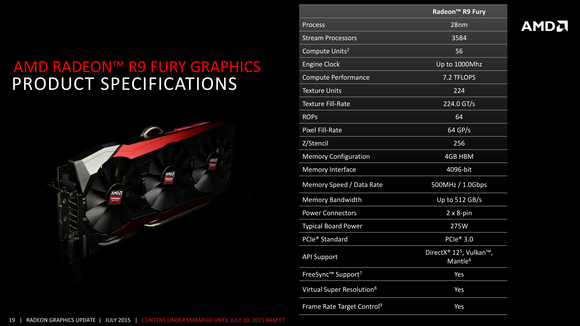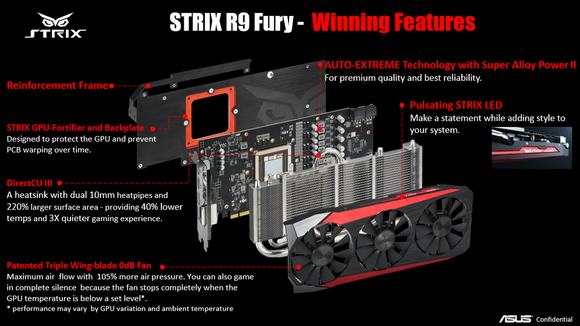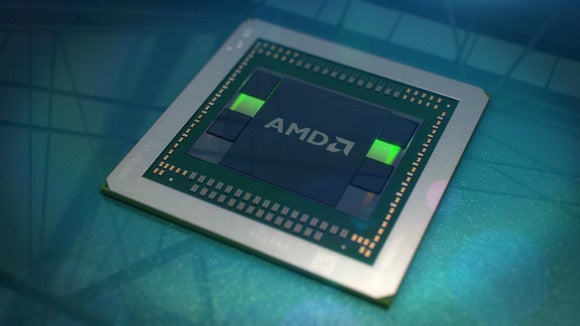Radeon R9 Fury graphics card review: AMD's furious bid for enthusiast gaming supremacy
AMD's air-cooled counterpart to the liquid-chilled Radeon Fury X doesn't topple its big brother, but the Asus Strix version of the Radeon Fury firmly outpunches Nvidia's GTX 980.
But forget about the Fury X.
It’s the Fury X’s little brother that AMD should be shouting about from the rooftops: the $550 Radeon Fury. Sure, it’s not quite as powerful as AMD’s liquid-chilled flagship, but the Radeon Fury is nothing less than a stellar card that clearly outpunches its GeForce GTX 980 counterpart in many titles—something the Fury X can’t quite claim against the 980 Ti.
Let’s dig in.
AMD Radeon Fury detailed
AMD originally implied that the Radeon R9 Fury was merely an air-cooled version of the Fury X, but that’s not quite true.
The differences from the Fury X are fairly major, however. First, and most noticeable: The Radeon Fury is indeed air-cooled, while the Fury X is available only in its liquid-cooled reference design. AMD partners are allowed to slap customized hardware and overclocks on the Fury, which Asus did to full effect with the Strix R9 Fury DirectCU III OC we reviewed.
The card largely replicates the design of Asus’ Radeon R9 390X Strix, featuring Asus’ vaunted DirectCU II tri-fanned cooling system for cooler, quieter running. Those fans actually stay off (and therefore silent) until the card hits 65 degrees Celsius, relying on the beefy heatsinks and pipes underneath to cool things down. The card runs super quiet.
The sleek-looking backplate on the top of the card leaves the back of the Fiji GPU and HBM exposed for more airflow. (The pulsating, illuminated red-and-white Strix logo on the side of the card is a nice touch, too.) Interestingly, while the reference-only Fury X eschews a DVI port completely, Asus stocked the Strix Fury with DVI-I, HDMI (still 1.4, sadly), and a trio of DisplayPorts. Sapphire’s competing Tri-X R9 Fury still lacks a DVI output.

More significant than the aesthetics and cooling are the Fury’s under-the-hood tweaks, which AMD didn’t mention previously. The Fury sports a cut-down version of the beefy new Fiji GPU found in the Fury X, chopping off 32 texture units, 512 stream processors, and 50MHz off the max clock speed, to 1000MHz boost. The Asus Strix Fury is clocked at 1000MHz, but hits 1020MHz when using "OC Mode" in the company's GPU Tweak II software.

Before we move on to the meat of the review—performance benchmarks!—a few quick notes. The R9 Fury, of course, supports AMD’s defunct Mantle API, as well as its performance-enhancing Vulkan successor and the similar DirectX 12 technology coming with Windows 10.
No comments:
Post a Comment